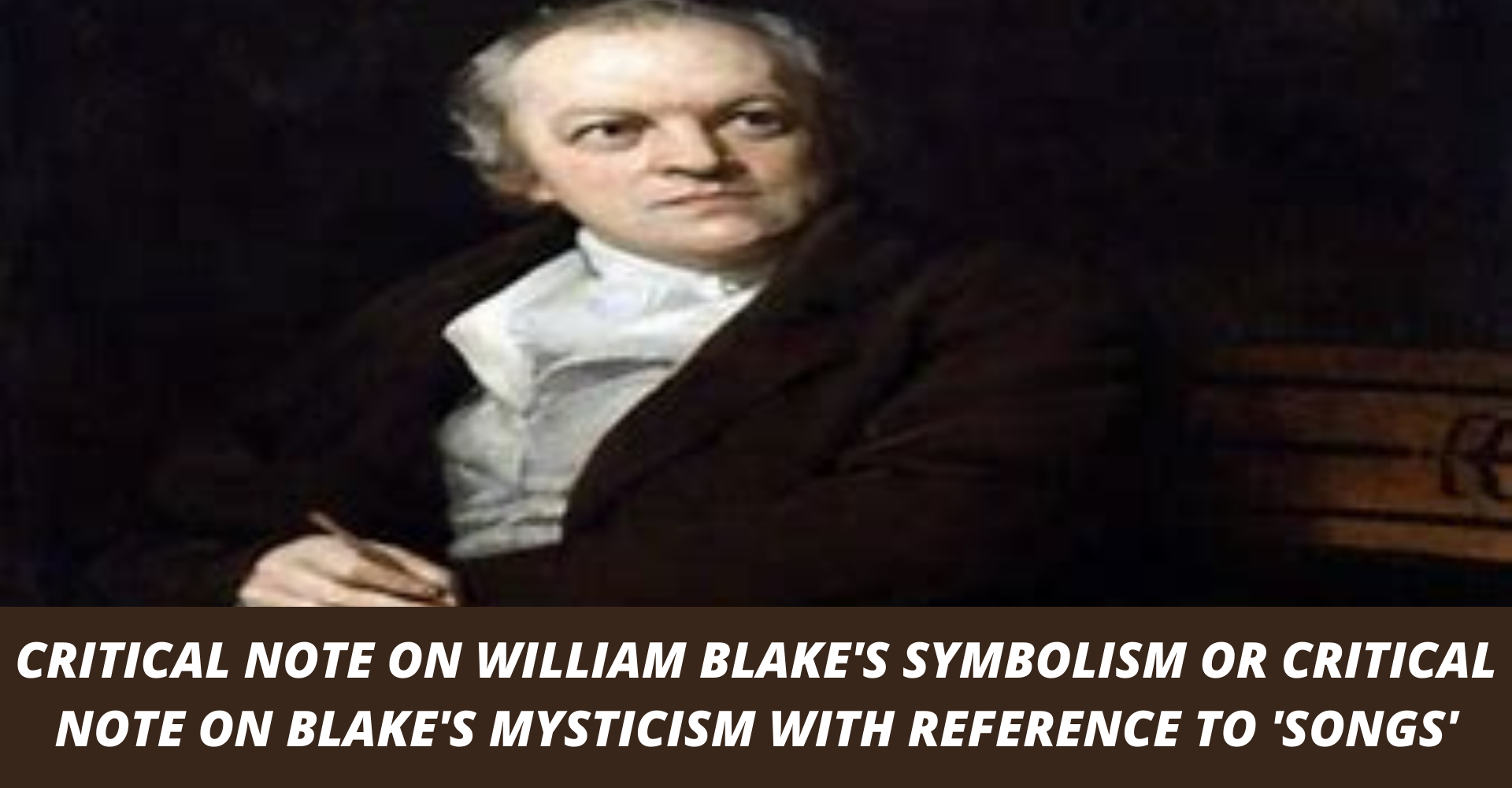“Symbolic poetry is a kind of Mystic poetry” remarks C.M. Bowara,”in which the poet tries to convey his sense of the mystical apprehension of life”. This mystical apprehension constitutes the transcendental relation that life bears to its creator. William Blake ranks high among the mystic poets of the English world as such his mysticism finds its natural expression in symbols. Whether his ‘Songs of Innocence or of Experience’ are nice care in point. Here are coherent vision of life as well as its ultimate reality is expressed with the help of manifold symbols like innocence symbols, oppression symbols and corruption symbols.
In ‘Songs of Innocence’ Blake visualises the state of childhood as the state of innocence or the state of lamb in the care of shepherd. Needless to say, this vision is in accord with the biblical representation where God, the father, takes care of all children black or white, rich or poor as the shepherd takes care of all his lambs. Again, the rural soundings in which the songs take place are quite meaningful because Blake considers nature to be all conducive and consistent with innocence. What is more, in ‘Song Of Innocence’ Blake’s symbolic expression of God slightly different from that found in the holy Bible but it is equally true and convincing. In “The Divine Image’ he declares:
“For mercy, pity, peace and love
Is God, our father dear
And mercy, pity, peace and love
Is Man, His child and care”.
It is apparent that man in his state of childhood bears the divine image. Going ahead, Blake transcends the religious difficulties in the connection and as Fairchild remarks: ‘Blake, like a true deist, discovers the inner thread of unity underlying all the religions of world and cries out.
“And all must love the human form,
In heathen, Turk or Jew,
where mercy, love and pity dwell
There God is dwelling too”.
While in ‘Song of Innocence’ Blake’s vision of the state of innocence is presented in lovely songs with the help of familiar symbols, in ‘Songs of Experience’, he creates symbols like ‘The Rose’, ‘The Sunflower’, and ‘The Tiger’ to express lyrically his vision of the state of experience which destroys innocence. Blake holds the views that when ‘Lamb’ is destroyed by experience, ‘the tiger is needed to restore normally the order of the world. Like Boehme, he senses that the apparent evil and malevolence in the tiger are simply manifestation of the unity of God showing his power and energy. Such a vision of ‘tiger’ reminds one of Eliot’s treatment who identifies ‘the tiger‘ with Jesus Christ in his ‘Gerontion’ to set right the world.
The sense of evil finds its complete expression in ‘The Sick Rose’ where Blake presents a symbolic situation admitting a number of interpretations. The ‘Invisible Worm’ that flies at night in the howling storm turns the crimson rose into its bed and as it leaves the bed having eaten the vital of it, the flower appears to be sick and dying. Here ‘the dark secret love’ of the worm is selfishness which destroys true love. From another angle, the worm symbolises experiences which spoils innocence and man’s spiritual life. Sometimes, the symbols as employed in ‘The Little Black Boy’ and in ‘The Cloud And The Pebble’ are quite simple ‘Cloud’ stands for selfless men and ‘pebbles’ for selfishness. But often the symbols become enigmatic and leads to the obscurity of thoughts. Like ‘Shelley’ and ‘Wordsworth’, Blake symbolic use of natural objects seem to be imaginative and picturesque. The sun, the moon, the star, the mountains, the streams and the flowers all the pregnant with spiritual meanings. For instance transforming the literal meaning of ‘Sun-flower’ is changed into a symbolic metaphor of soul. Blake says:
“Rise from their grave and aspire,
where my sunflower wishes to go”
Here, the poet’s ‘Sunflower’ is nothing but the soul that long for eternity, the ideal state of perfect freedom and bliss. In such mystical such exploration of the soul, Blake reminds us of ‘Lawrence‘ and ‘Joyce’ who also tend to explore ‘the unknown modes of being’ with the help of multiple type suggestive symbols drawing from fictive, mystical and biblical resources.
PLEASE HELP ME TO REACH 1000 SUBSCRIBER ON MY COOKING YT CHANNEL (CLICK HERE)











